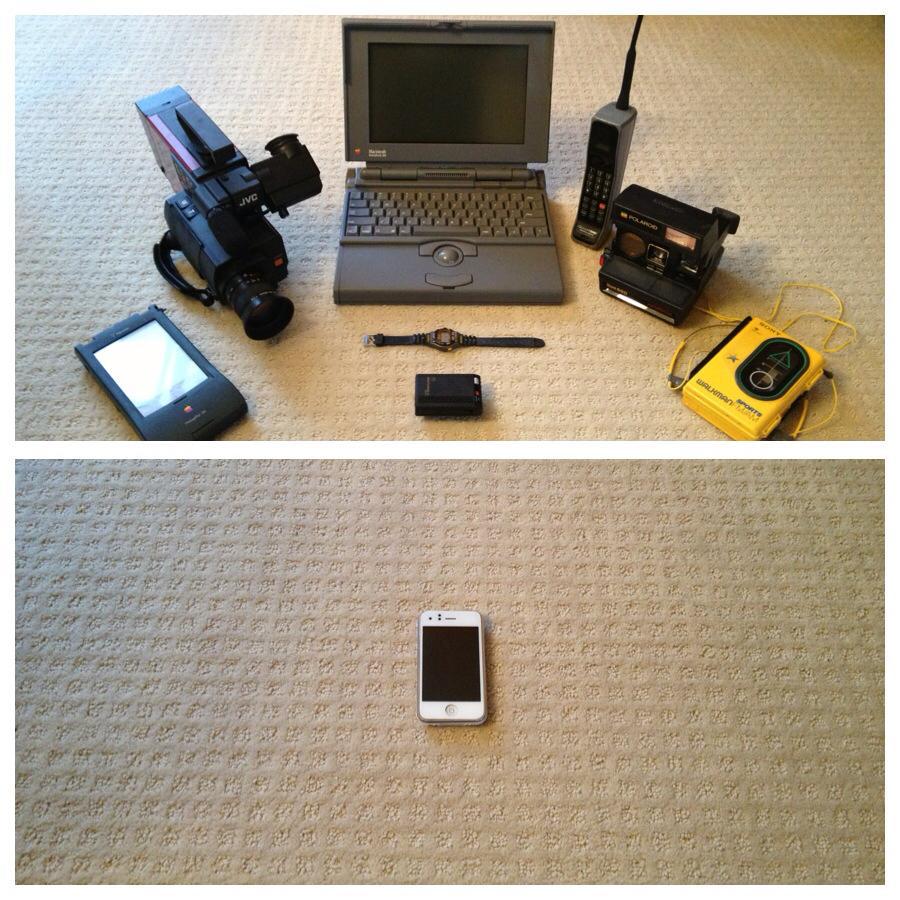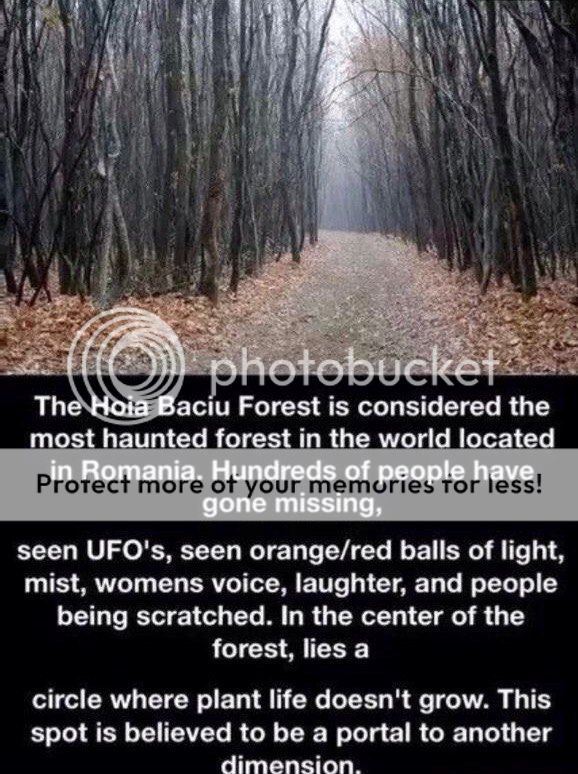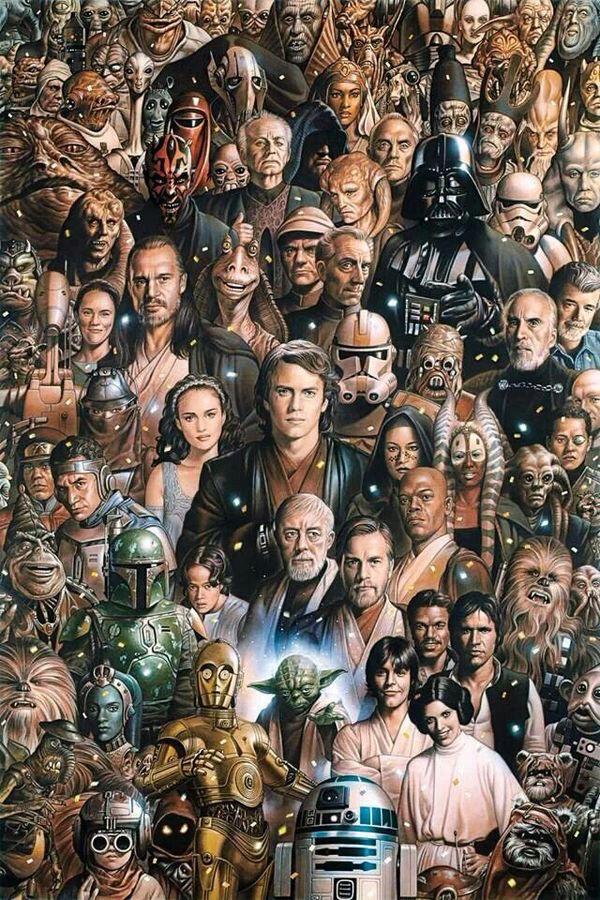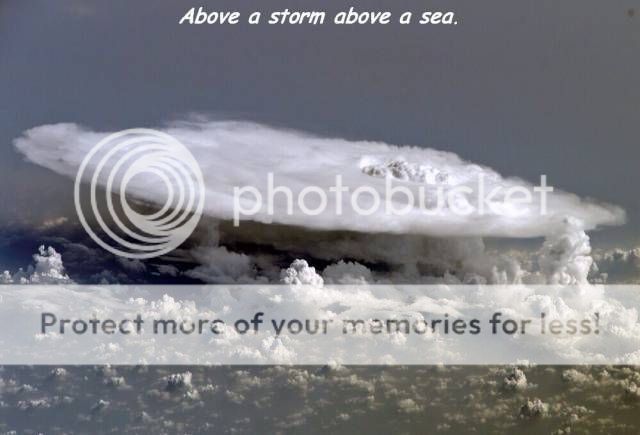-
SCAM WARNING! See how this scam works in Classifieds.
You are using an out of date browser. It may not display this or other websites correctly.
You should upgrade or use an alternative browser.
You should upgrade or use an alternative browser.
Science and Souls (for geeks and spiritual explorers)
- Thread starter Bob Loblaw
- Start date
momofthegoons
vapor accessory addict
NASA's Keeper Telescope Discovers a colossal artificial structure orbiting a star in our vicinity.
"Aliens should always be the very last hypothesis you consider, but this looked like something you would expect an alien civilization to build." – Jason Wright, astronomer from Penn State University
Read more here.

"Aliens should always be the very last hypothesis you consider, but this looked like something you would expect an alien civilization to build." – Jason Wright, astronomer from Penn State University
Read more here.

momofthegoons
vapor accessory addict
Fallstreak holes. It begins with a process known as supercooling.
Supercooling is when the temperature of a liquid is lowered below freezing without it becoming a solid. In this state, the particles will crystallize if even a single “seed crystal” is available to activate the process. TheBergeron Process is when a mixed phase cloud, containing supercooled liquid and ice, undergoes rapid crystal growth in the centre while the water around quickly evaporates—this is what gives you that hole-punched-out-in-the-middle-of-the-sky effect.
Fallstreak holes are initiated by a drop in atmospheric pressure and temperature which introduces ice crystals into a cloud that has a combination of liquid and supercooled liquids. So, an aircraft flying through a cloud with these conditions can set off a domino effect and initiate this bizarre phenomena. Also known as sky punches, or hole punch clouds these natural events are beautiful and unusual, rare enough that they are often mistaken for UFOs.

Supercooling is when the temperature of a liquid is lowered below freezing without it becoming a solid. In this state, the particles will crystallize if even a single “seed crystal” is available to activate the process. TheBergeron Process is when a mixed phase cloud, containing supercooled liquid and ice, undergoes rapid crystal growth in the centre while the water around quickly evaporates—this is what gives you that hole-punched-out-in-the-middle-of-the-sky effect.
Fallstreak holes are initiated by a drop in atmospheric pressure and temperature which introduces ice crystals into a cloud that has a combination of liquid and supercooled liquids. So, an aircraft flying through a cloud with these conditions can set off a domino effect and initiate this bizarre phenomena. Also known as sky punches, or hole punch clouds these natural events are beautiful and unusual, rare enough that they are often mistaken for UFOs.

momofthegoons
vapor accessory addict
notice the moons it formed?Two planets... colliding

(simulation)
Crohnie
Crohn's Warrior
So often in documentaries about space, we are told how insignificant and unremarkable Earth, our Sun, the solar system, and the Milky Way Galaxy are. Nothing could be further from the truth. This theme is less dominant than it used to be now that more is known about extrasolar planets, alien solar systems, and the universe in general.
In reality, we live on a remarkable planet in an unusual solar system. Our Sun is larger than the average star, most of which are red dwarfs, and is not part of a binary system. Our solar system has significantly more planets than the 2 per solar system average found so far. The Milky Way galaxy isn't unremarkable either. It's larger than 90% of the other galaxies in the observable universe. It is also one of the very oldest galaxies in the known universe.
While it's true that through centuries of discovery, our place in the universe has gotten smaller and smaller and seemly insignificant, our star, our planet, our solar system, and the Milky Way Galaxy, though not unique, are indeed, remarkable.
In reality, we live on a remarkable planet in an unusual solar system. Our Sun is larger than the average star, most of which are red dwarfs, and is not part of a binary system. Our solar system has significantly more planets than the 2 per solar system average found so far. The Milky Way galaxy isn't unremarkable either. It's larger than 90% of the other galaxies in the observable universe. It is also one of the very oldest galaxies in the known universe.
While it's true that through centuries of discovery, our place in the universe has gotten smaller and smaller and seemly insignificant, our star, our planet, our solar system, and the Milky Way Galaxy, though not unique, are indeed, remarkable.
h3rbalist
I used to do drugs. I still do, but I used to, too
UP Aerospace SL-10 NASA Flight Opportunities Mission
"We had a great launch," said Paul De Leon, NASA Flight Opportunities Program campaign manager.
"All the payloads were exposed to the relevant environments that the researchers were seeking,"
"We had a great launch," said Paul De Leon, NASA Flight Opportunities Program campaign manager.
"All the payloads were exposed to the relevant environments that the researchers were seeking,"
momofthegoons
vapor accessory addict
grokit
well-worn member
SpaceX Historic Rocket Landing Is a Success
Dec 21, 2015, 11:46 PM ET

An upgraded SpaceX Falcon 9 rocket
SpaceX successfully launched and landed its Falcon 9 rocket back on Earth tonight, marking the first time a rocket has launched a payload into space and returned.
Founder Elon Musk has said the ability to reuse a rocket -- which dramatically reduces launch cost -- is something that will help revolutionize commercial space travel.
"I think this is a critical step along the way towards being able to establish a city on Mars," he said on a call with reporters Monday night. "That’s what all this is about."
"11 satellites deployed to target orbit and Falcon has landed back at Cape Canaveral. Headed to LZ-1. Welcome back, baby!" Elon Musk (@elonmusk) December 22, 2015
The company has previously attempted the feat three times, coming close to landing on a bullseye on a floating barge. Tonight was the first time the company attempted to land the Falcon 9 on land.
The landing is a huge victory for Musk and his team, who were sidelined after the explosion of the Falcon 9 rocket in June as it carried the Dragon capsule to the International Space Station.
The upgraded Falcon 9 stands slightly taller than predecessors at 229.6 feet and has more thrust.
Last month, Amazon billionaire Jeff Bezos and his company Blue Origin successfully launched a rocket to a test altitude of 329,839 feet and then landed it near the launch pad in Texas.
http://abcnews.go.com/Technology/spacex-set-attempt-rocket-launch-landing-tonight/story?id=35888303
https://www.reddit.com/r/news/comme.../spacex_makes_history_returns_first_stage_to/

Dec 21, 2015, 11:46 PM ET

An upgraded SpaceX Falcon 9 rocket
SpaceX successfully launched and landed its Falcon 9 rocket back on Earth tonight, marking the first time a rocket has launched a payload into space and returned.
Founder Elon Musk has said the ability to reuse a rocket -- which dramatically reduces launch cost -- is something that will help revolutionize commercial space travel.
"I think this is a critical step along the way towards being able to establish a city on Mars," he said on a call with reporters Monday night. "That’s what all this is about."
The company has previously attempted the feat three times, coming close to landing on a bullseye on a floating barge. Tonight was the first time the company attempted to land the Falcon 9 on land.
The landing is a huge victory for Musk and his team, who were sidelined after the explosion of the Falcon 9 rocket in June as it carried the Dragon capsule to the International Space Station.
The upgraded Falcon 9 stands slightly taller than predecessors at 229.6 feet and has more thrust.
Last month, Amazon billionaire Jeff Bezos and his company Blue Origin successfully launched a rocket to a test altitude of 329,839 feet and then landed it near the launch pad in Texas.
http://abcnews.go.com/Technology/spacex-set-attempt-rocket-launch-landing-tonight/story?id=35888303
https://www.reddit.com/r/news/comme.../spacex_makes_history_returns_first_stage_to/

Last edited:
TomC1315
Well-Known Member
I'd been wondering the other day how the earth appears in Mar's night sky ...
http://astrobob.areavoices.com/2012/08/10/what-does-earth-look-like-from-mars/
Earth-and-moon-from-Mars-binos2.jpg
Part of my spiritual discipline involves 'stepping back' from worldly drama and adopting a more detached and uninvolved perspective ... putting everything in a perspective apart from my ego's agenda and instead relating to a more universal view of my life and the life around me, of all of creation, 'knowing' that at the deepest and almost unimaginable level - that everything is one.
And then remember to accept the 'mysterious' aspects of life and creation that remain beyond my comprehension and simply trust in the process :-)

http://astrobob.areavoices.com/2012/08/10/what-does-earth-look-like-from-mars/
Earth-and-moon-from-Mars-binos2.jpg
Part of my spiritual discipline involves 'stepping back' from worldly drama and adopting a more detached and uninvolved perspective ... putting everything in a perspective apart from my ego's agenda and instead relating to a more universal view of my life and the life around me, of all of creation, 'knowing' that at the deepest and almost unimaginable level - that everything is one.
And then remember to accept the 'mysterious' aspects of life and creation that remain beyond my comprehension and simply trust in the process :-)

momofthegoons
vapor accessory addict
A cloud that took the form of a 'hand of God' holding a fireball dominated the skyline above the north coast the Portuguese island of Madeira at around 8 a.m. on Monday, Jan. 24. (Mercury Press)
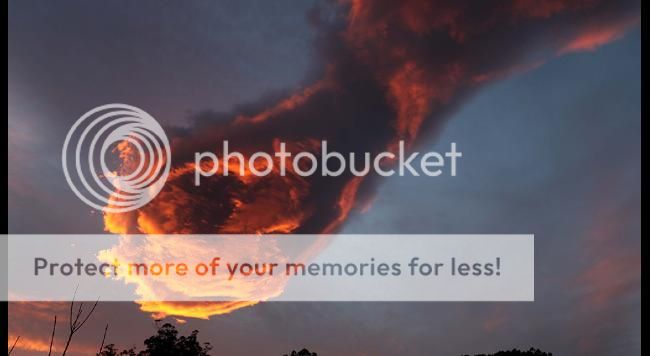

momofthegoons
vapor accessory addict
grokit
well-worn member
^ Lol that we have to read about the cia's ufo declassifications in an aussie newspaper.
 Btw, the new x-files is excellent
Btw, the new x-files is excellent 
The Milky Way may be dead or dying, but help is on the way
Our galaxy might be running out of fuel, but scientists say that a shipment is on the way in the form of a previously exiled part of the Milky Way.
It's possible the Milky Way is starving to death or already dead, but a part of our galaxy that was exiled into space millions of years ago is now barreling its way back home. When it arrives, it may bring with it a snack that could revive the galaxy.
Unless you spend your days studying the life cycle of stars, you're likely confused right now, so let's break that down less metaphorically.
Galaxies like our Milky Way grow by "feeding" off of a cosmic supply of hydrogen gas to form new stars. When the process of star formation in a galaxy begins to slow down or stop, scientists like Kevin Schawinski from the Swiss Federal Institute of Technology refer to that galaxy as dead or dying.

Is the "Smith Cloud" a galaxy-saving shipment of star-forming food?
Schawinski has been drawing on a crowd of willing volunteer citizen scientists on Galaxy Zoo to try and determine if the Milky Way is in fact in the midst of a terminal decline. The results are uncertain. Our galaxy appears to be teetering on the edge of a cliff about to fall toward its inevitable end, he says, if it hasn't already gone over.
"It's entirely possible that the Milky Way galaxy is a zombie, having died a billion years ago," he wrote on Thursday on academic outreach site The Conversation.
On the very same day, a team based at Notre Dame detailed findings that a big shipment of that galactic "food" needed for continued growth via star formation is hurtling toward us at 700,000 miles per hour (about 1,126,500 kilometers per hour).
Specifically, the cosmic feast is a giant gas cloud called the Smith Cloud that was actually a part of the outer Milky Way some 70 million years ago before being mysteriously ejected into intergalactic space. Now, the Smith Cloud is boomeranging back home, and it's carrying with it enough hydrogen and helium gas to create 2 million suns when it collides with the Milky Way.
"The cloud is an example of how the galaxy is changing with time," explained team leader Andrew Fox of the Space Telescope Science Institute in a NASA release Thursday. "It's telling us that the Milky Way is a bubbling, very active place where gas can be thrown out of one part of the disk and then return back down into another."
While scientists continue to try and determine where the Milky Way is in its own lifespan, we can take some solace in the fact that a sweet shipment of star sustenance is on the way. Of course, we won't be around when the Smith Cloud finally makes its homecoming. It'll still be about 30 million years before it plows into the edge of our galaxy.
http://www.cnet.com/news/the-milky-way-is-dead-or-dying-but-help-in-on-the-way/
 Btw, the new x-files is excellent
Btw, the new x-files is excellent 
The Milky Way may be dead or dying, but help is on the way
Our galaxy might be running out of fuel, but scientists say that a shipment is on the way in the form of a previously exiled part of the Milky Way.
It's possible the Milky Way is starving to death or already dead, but a part of our galaxy that was exiled into space millions of years ago is now barreling its way back home. When it arrives, it may bring with it a snack that could revive the galaxy.
Unless you spend your days studying the life cycle of stars, you're likely confused right now, so let's break that down less metaphorically.
Galaxies like our Milky Way grow by "feeding" off of a cosmic supply of hydrogen gas to form new stars. When the process of star formation in a galaxy begins to slow down or stop, scientists like Kevin Schawinski from the Swiss Federal Institute of Technology refer to that galaxy as dead or dying.

Is the "Smith Cloud" a galaxy-saving shipment of star-forming food?
Schawinski has been drawing on a crowd of willing volunteer citizen scientists on Galaxy Zoo to try and determine if the Milky Way is in fact in the midst of a terminal decline. The results are uncertain. Our galaxy appears to be teetering on the edge of a cliff about to fall toward its inevitable end, he says, if it hasn't already gone over.
"It's entirely possible that the Milky Way galaxy is a zombie, having died a billion years ago," he wrote on Thursday on academic outreach site The Conversation.
On the very same day, a team based at Notre Dame detailed findings that a big shipment of that galactic "food" needed for continued growth via star formation is hurtling toward us at 700,000 miles per hour (about 1,126,500 kilometers per hour).
Specifically, the cosmic feast is a giant gas cloud called the Smith Cloud that was actually a part of the outer Milky Way some 70 million years ago before being mysteriously ejected into intergalactic space. Now, the Smith Cloud is boomeranging back home, and it's carrying with it enough hydrogen and helium gas to create 2 million suns when it collides with the Milky Way.
"The cloud is an example of how the galaxy is changing with time," explained team leader Andrew Fox of the Space Telescope Science Institute in a NASA release Thursday. "It's telling us that the Milky Way is a bubbling, very active place where gas can be thrown out of one part of the disk and then return back down into another."
While scientists continue to try and determine where the Milky Way is in its own lifespan, we can take some solace in the fact that a sweet shipment of star sustenance is on the way. Of course, we won't be around when the Smith Cloud finally makes its homecoming. It'll still be about 30 million years before it plows into the edge of our galaxy.
http://www.cnet.com/news/the-milky-way-is-dead-or-dying-but-help-in-on-the-way/
TomC1315
Well-Known Member
I'm bracing for impact already ... just in case :-)
Seriously though, contemplating the age and immensity of the universe helps me put and keep things in the proper perspective ... we (earth's inhabitants ... and not just humanity) are all neighbors, from the same family.
Seriously though, contemplating the age and immensity of the universe helps me put and keep things in the proper perspective ... we (earth's inhabitants ... and not just humanity) are all neighbors, from the same family.
h3rbalist
I used to do drugs. I still do, but I used to, too
Five planets align in spectacular celestial show
Mercury, Venus, Mars, Jupiter and Saturn are visible together in the night sky for the first time since 2005
Keen astronomers still have time to see five planets in the night sky, in a rare alignment which has not happened for more than a decade.
For the first time since 2005, Mercury, Venus, Mars, Jupiter and Saturn can be seen together.
The alignment was first visible in Britain just before dawn on Wednesday, January 20. The alignment will continue until the morning of February 20.
Mercury, Venus, Mars, Jupiter and Saturn are visible together in the night sky for the first time since 2005
Keen astronomers still have time to see five planets in the night sky, in a rare alignment which has not happened for more than a decade.
For the first time since 2005, Mercury, Venus, Mars, Jupiter and Saturn can be seen together.
The alignment was first visible in Britain just before dawn on Wednesday, January 20. The alignment will continue until the morning of February 20.
momofthegoons
vapor accessory addict
Some helpful science facts.....










